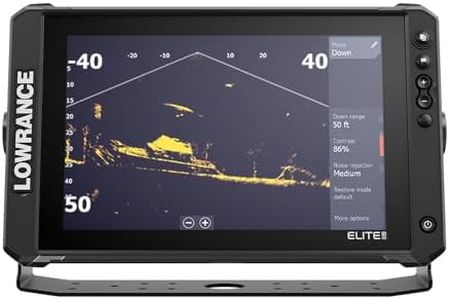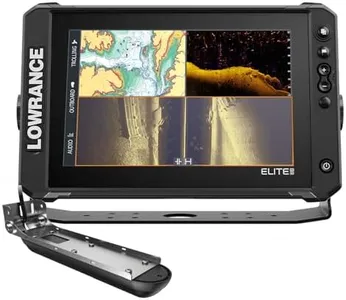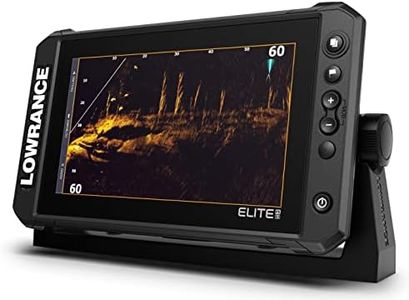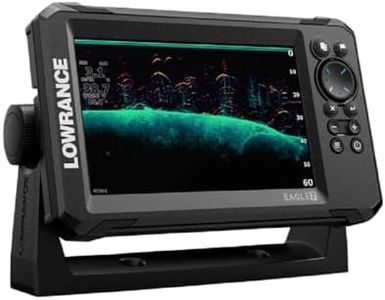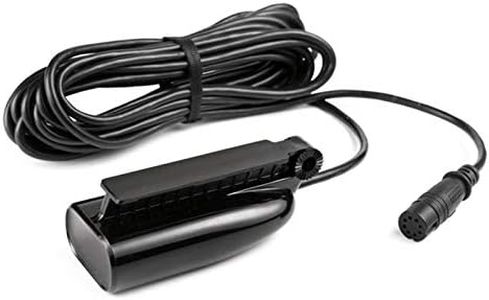10 Best Lowrance Fish Finders 2025 in the United States
Our technology thoroughly searches through the online shopping world, reviewing hundreds of sites. We then process and analyze this information, updating in real-time to bring you the latest top-rated products. This way, you always get the best and most current options available.

Our Top Picks
Winner
Lowrance Eagle Eye™ 9 Live AMER, 9" IPS Screen, Eagle Eye™ transducer, C-MAP® Inland Charts for The US, with Coverage of Over 17,000+ American Lakes
Most important from
102 reviews
The Lowrance Eagle Eye 9 Live is a solid choice for freshwater anglers who want a clear, versatile fish finder with a 9-inch bright IPS screen that remains easy to read from different angles and even when wearing polarized sunglasses. It uses a powerful transducer that provides four different sonar views simultaneously—Live Forward, Live Down, CHIRP Sonar, and DownScan Imaging with FishReveal—giving you detailed underwater imagery without needing extra modules. This helps spot fish and understand underwater structures more easily.
The included C-MAP US Inland charts cover over 17,000 lakes, which is great for navigating familiar or new freshwater spots in the US. Its autotuning sonar adjusts automatically, which is helpful if you’re not keen on fiddling with settings. Installation is simplified by a new twist-lock connector system, fitting well on boats or kayaks. On the downside, it relies on battery power, so you’ll need to manage charging or battery life during longer outings. Also, while the 9-inch display is a nice size, it might be a bit small for those used to larger screens. The device is well-built but plastic, so handle it with care.
This device is user-friendly with good sonar detail and navigation features, making it suitable for casual to intermediate anglers who focus on US freshwater fishing and want an all-in-one solution without extra add-ons.
Most important from
102 reviews
Lowrance ActiveTarget2 Module + Transducer + Mounts
Most important from
32 reviews
The Lowrance ActiveTarget2 is a specialized fish finder module designed to give anglers real-time, high-resolution views of underwater fish and structures. Its standout feature is the live-action sonar that provides detailed images from different angles—forward, down, and scout views—helping you see fish movements clearly and react faster. You can even use two transducers simultaneously for a wider perspective, which is great for bait tracking. The device comes with mounting options and necessary cables, making it ready to install on various boat setups.
This product delivers smooth and clear sonar imagery, runs on battery power, and weighs about 10 pounds, making it portable but potentially requiring some effort to install. It does not include a built-in display or GPS integration, so it needs to be paired with compatible Lowrance displays such as the HDS Pro for a complete setup.
For anglers seeking advanced sonar technology to obtain a detailed look beneath their boat, especially those who already use Lowrance equipment, this device enhances fishing experiences with high-quality, live underwater views. Users who prefer an all-in-one unit with integrated GPS and a built-in display might need to consider pairing this module with other Lowrance products or explore different models.
Most important from
32 reviews
Lowrance Elite FS 9 Fish Finder with Active Imaging 3-in-1 Transducer, Preloaded C-MAP Contour+ Charts
The Lowrance Elite FS 9 Fish Finder is a robust device for anglers seeking detailed underwater views and navigation capabilities. The 9-inch LCD multi-touch screen is user-friendly and provides high resolution, making it easy to view and interpret data. Its Active Imaging 3-in-1 sonar, which includes CHIRP, SideScan, and DownScan with FishReveal, offers advanced imaging features that help identify structures and fish with great clarity.
Additionally, the support for ActiveTarget Live Sonar allows users to see real-time images of fish reacting to their lures, which is a significant advantage for precise fishing. The preloaded C-MAP Contour+ charts cover 8,900 U.S. lakes, which is beneficial for locating key fishing spots and navigating accurately. The device also includes full networking capabilities, allowing integration with additional devices such as radar and outboard pilots, enhancing the fishing system.
The power output and frequency options are suitable for various fishing conditions, though the 12 Volt DC power source means it needs a compatible power setup. Despite its high functionality, the device's size and weight might be considered bulky by some users, and the one-year warranty might seem limited for such a technologically advanced product. This fish finder is excellent for serious anglers who need detailed imaging and integrated navigation but might be overkill for casual users or those new to fish finding technology.
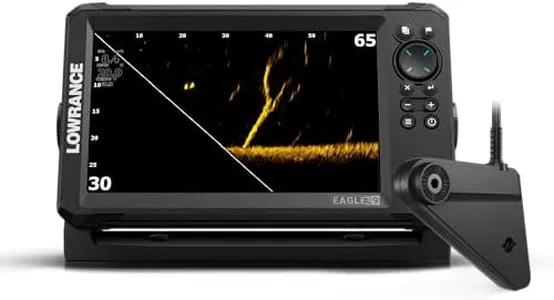
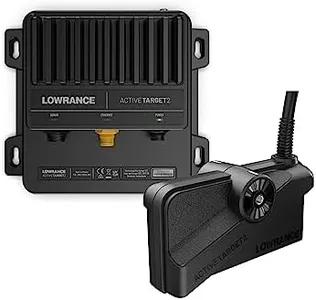
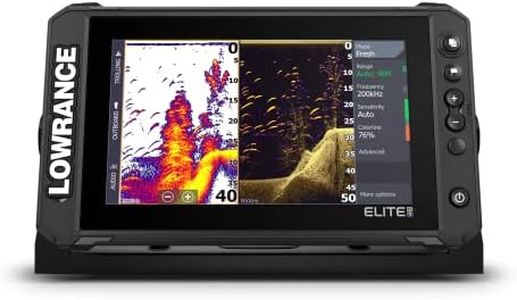
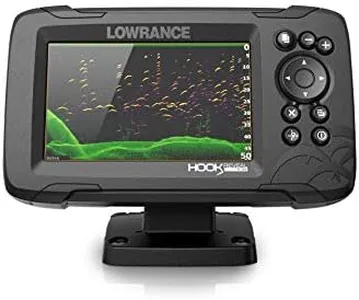
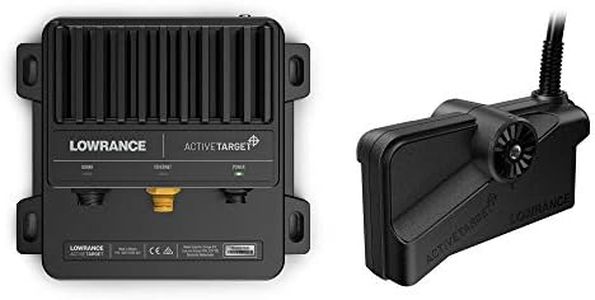
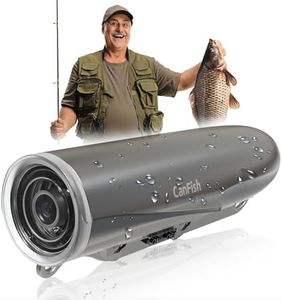
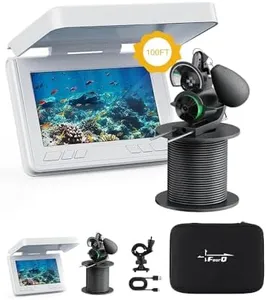

![[FishPRO® 2025 Upgrade] 4.5'' True HD 1080P Underwater Fishing Camera w/DVR-32GB, (NO Need Learn) Ice Fishing Camera Underwater, Ice Fish Finder Camera - w/ 5,000mAh & USB-C, IR+LED, 20m/66ft](https://images-proxy.bestreviews.guide/0CVGaE9o20DmnIASQqwX_PN8NoA=/0x300/https://m.media-amazon.com/images/I/51BAH60l9ML._AC_CX679_.jpg)
![[FishPRO®2025 Upgrade] [Auto-Focus 2''- 40''] Underwater Fishing Camera w/DVR 32GB,1200TVL, Ice Fishing Camera Underwater Fish Finder, w/IR+LED Light for Dark, 4500mAh w/ [Spare Charging Port], 49ft](https://images-proxy.bestreviews.guide/acq3_QtcLbcjVSUbrd75CGmUBuk=/0x300/https://m.media-amazon.com/images/I/51hexOA1C9L._AC_CX679_.jpg)
